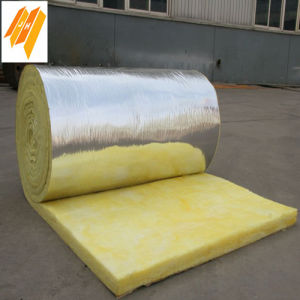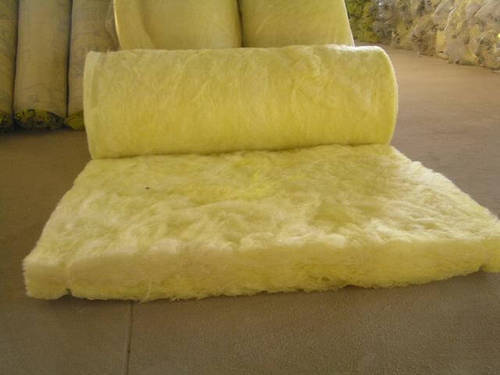Fiberglass wool is an insulating material made from fibers of glass arranged using a binder into a texture similar to wool. The process traps many small pockets of air between the glass, and these small air pockets result in high thermal insulation properties. Glasswool is produced in rolls or in slabs, with different thermal and mechanical properties. It may also be produced as a material that can be sprayed or applied in place, on the surface to be insulated.

How does Fiberglass Wool Function?
Gases possess poor thermal conduction properties compared to liquids and solids,and thus makes a good insulation material if they can be trapped in materials so that much of the heat that flows through the material, is forced to flow through the gas. In order to further augment the effectiveness of a gas (such as air) it may be disrupted into small cells which cannot effectively transfer heat by natural convection. Natural convection involves a larger bulk flow of gas driven by buoyancy and temperature differences, and it does not work well in small gas cells where there is little density difference to drive it, and the high surface area to volume ratios of the small cells retards bulk gas flow inside them by means of viscous drag.
In order to accomplish formation of small gas cells in man-made thermal insulation, glass and polymer materials can be used to trap air in a foam-like structure. These air-trapping property is the insulation principle used glass and rock wool.
Uses of Fiberglass
Glasswool is a thermal insulation that consists of intertwined and flexible glass fibers, which causes it to “package” air, resulting in a low density that can be varied through compression and binder content (as noted above, these air cells are the actual insulator). Glasswool can be a loose fill material, blown into attics, or, together with an active binder sprayed on the underside of structures, sheets and panels that can be used to insulate flat surfaces such as cavity wall insulation, ceiling tiles, curtain walls as well as ducting. It is also used to insulate piping and for soundproofing.
Fiberglass batts and blankets
Batts are precut, whereas blankets are available in continuous rolls. Compressing the material reduces its effectiveness. Cutting it to accommodate electrical boxes and other obstructions allows air a free path to cross through the wall cavity. One can install batts in two layers across an unfinished attic floor, perpendicular to each other, for increased effectiveness at preventing heat bridging. Blankets can cover joists and studs as well as the space between them. Batts can be challenging and unpleasant to hang under floors between joists; straps, or staple cloth or wire mesh across joists, can hold it up.
Gaps between batts (bypasses) can become sites of air infiltration or condensation (both of which reduce the effectiveness of the insulation) and requires strict attention during the installation. By the same token careful weatherization and installation of vapour barriers is required to ensure that the batts perform optimally. Air infiltration can be also reduced by adding a layer of cellulose loose-fill on top of the material.
Health problems associated with Fiberglass
Fiberglass will irritate the eyes, skin, and the respiratory system. Potential symptoms include irritation of eyes, skin, nose, and throat, dyspnea (breathing difficulty), sore throat, hoarseness and cough. Scientific evidence demonstrates that fiberglass is safe to manufacture, install and use when recommended work practices are followed to reduce temporary mechanical irritation. Unfortunately these work practices are not always followed, and fiberglass is often left exposed in basements that later become occupied. Fiberglass insulation should never be left exposed in an occupied area.




